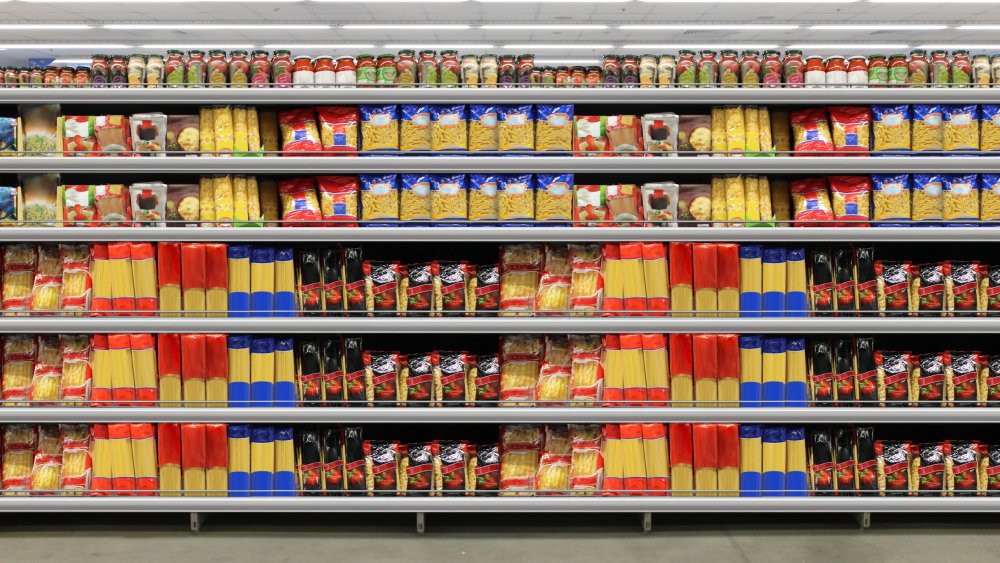This Big Change Means Ingredient Labels Might Not Be Accurate Right Now
In light of the COVID-19 pandemic and potential food supply chain disruptions, the U.S. Food and Drug Administration (FDA) has temporarily relaxed some food labeling guidelines in order to keep food where it belongs — in our local supermarkets, where we can buy what we need (via Food & Wine). Essentially, the FDA is allowing food manufacturers more leeway when substituting certain ingredients that may not be available to them at the moment, and they're not requiring them to list those minor changes on their labels. The agency wrote, "The goal is to provide regulatory flexibility, where appropriate, to help minimize the impact of supply chain disruptions on product availability associated with the current COVID-19 pandemic." Sounds pretty good, right?
Ingredient lists, then, don't have to be 100 percent accurate while these regulations have been relaxed. While there is a bevy of rules that accompany this flexibility, this means that the food you buy may not have the actual ingredients that are listed on the package. Is this a problem?
Food labeling must still follow certain criteria
This is not necessarily as alarming as it sounds for most people — ingredient swaps are meant to be "minor formulation changes" and shouldn't be all that noticeable to the casual consumer with no dietary restrictions or medical concerns when it comes to food (via FDA). Basically, the ingredient swaps are meant to keep the products moving through the supply chain without being a massive change to how the product itself works or tastes.
Guidelines mandate that a few factors must be considered before making a substitituion — safety, quality, prominence, claims, nutrition, and characterizing ingredient. In other words, manufacturers mustn't sub an allergen for a non-allergen, for example, or they can't introduce a gluten-containing ingredient in a gluten-free food. Also, the substituted ingredient must be 2 percent or less of the product's weight, it cannot be a characterizing ingredient (if you sell raisin bread, you can't sub something for raisins), and the subbed ingredient cannot significantly alter the nutrition facts on the label.
Those with food allergies have concerns
Problems can arise, though, when it comes to food allergies, sensitivities, or intolerances. Food Allergy Research and Education (FARE), a non-profit organization dedicated to food allergy research and awareness, has issued a statement voicing their concerns, particularly since ingredient swaps under these can occur outside of the "big 8" allergens — milk, eggs, peanuts, tree nuts, fish, crustacean shellfish, wheat, and soy (via School Nutrition Association). While other common food allergens are included in the FDA's guidelines (such as sesame or celery), many, many others are not, which is a potential problem for those with those food allergies.
FARE hopes to open a conversation with the FDA in order to mandate a few changes to these guidelines, such as using social media to highlight changes or add stickers to products when ingredients are changed. "We understand that COVID-19 has been an obstacle for food manufacturers, too, through unanticipated shortages and supply chain disruptions to ensure products are available, but the food allergy community relies on transparency and it is our hope that we can work together with FDA to find a solution that benefits everyone and ensures the safety of the food supply for those whose lives depend on knowing exactly what is in the products they are buying," says Lisa Gable, CEO of FARE.


